The Legion: How Russia’s invasion of Ukraine drew in thousands of international volunteer fighters
Ukraine – a year of war: Thousands of foreign citizens flocked to Ukraine to fight off the Russian invasion. Richard Hall speaks to some of those who have put their lives on the line

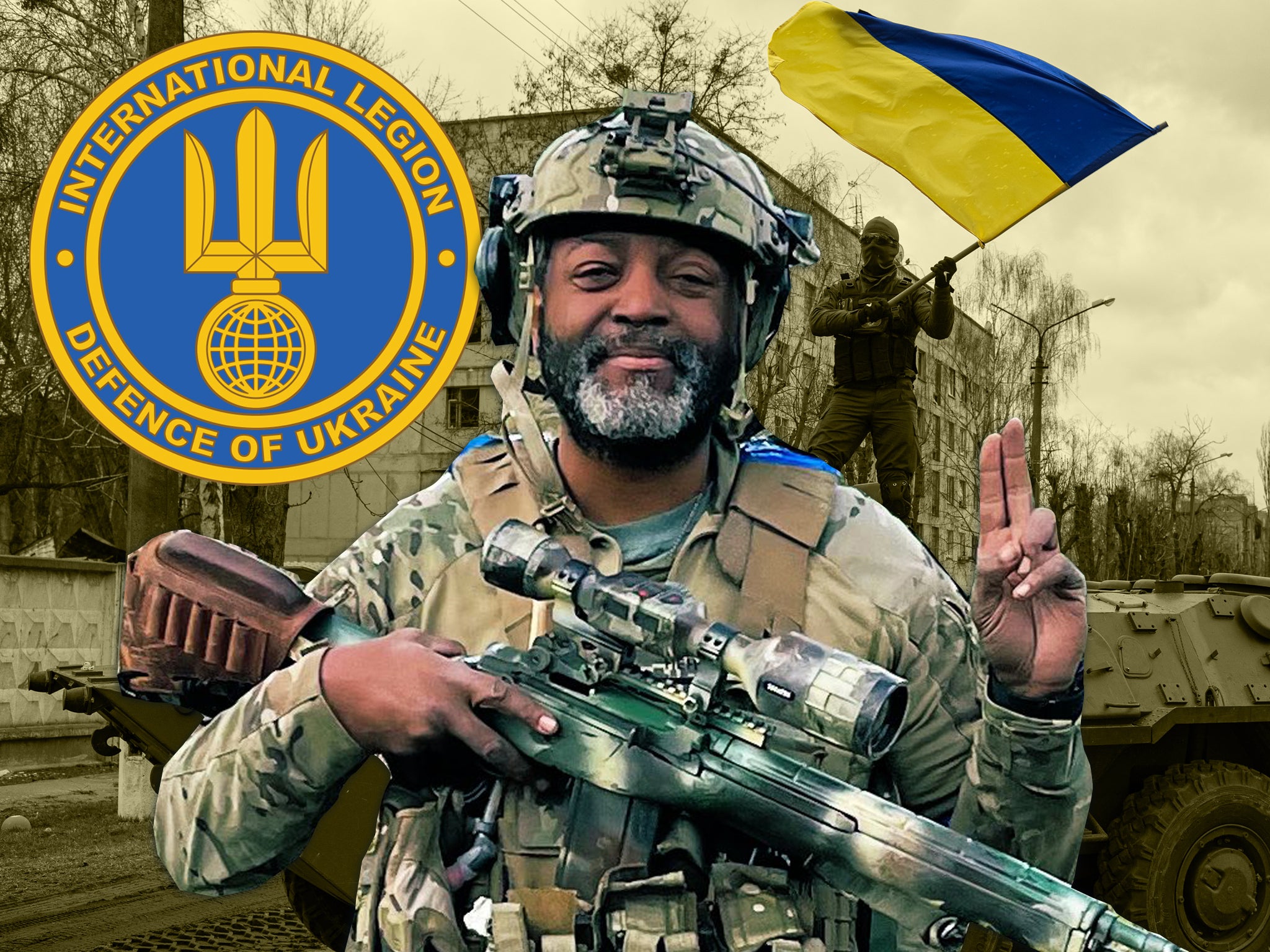
One afternoon in April last year, Malcolm Nance was being interviewed on MSNBC from the western Ukrainian city of Lviv when a Russian cruise missile flew overhead. He appeared on the network as an analyst, brought in to share his expertise earned over a long career in the US military. He tracked the missile with a compass and gave commentary as it flew towards its target.
Just hours later, he was back on screen again. This time he was dressed in military fatigues, wearing a helmet and carrying an assault rifle, announcing his decision to join the fight against the Russian invasion.
“The more I saw of the war, the more I thought I’m done talking,” he said in the broadcast, in which he revealed for the first time that he had joined a unit of foreign fighters within the Ukrainian army.
In the year since Russia launched its invasion of Ukraine, tens of thousands of foreign volunteers like Nance from around the world have taken up arms to repel it. Among them are military veterans, adventurists, ideological crusaders and humanitarians. Some come to reinvent themselves, others to fight for a cause.
Though they may not be large in number compared to the relative sizes of the Ukrainian and Russian armed forces, they have brought unique experience and publicity to the conflict.
By the time he made his primetime announcement, Nance had already been volunteering with the Ukrainian army for a month. On 27 February, Ukrainian president Volodymyr Zelensky declared the formation of the International Legion of Territorial Defense of Ukraine – a unit specifically for foreigners who wanted to fight the Russian invasion – and invited people to “join the defence of security in Europe and the world”. Nance did just that, the next day.
“They said just go to a Ukrainian embassy and you’ll get instructions. And that’s what I did,” he tells The Independent.
Before the war, Nance had been travelling the country working in his role as an analyst for MSNBC, studying the various ways Russia might launch its invasion. He made friends with many of the Ukrainian soldiers he met along the way. When the war came, he felt obliged to do something.
“I was receiving calls from people I’ve met in Ukraine when I was down on the battlefront, a woman interpreter who I knew in the army said, ‘we received more artillery shells in the last few hours that we received the entire last four years.’ And she said, ‘Well, we’re going to die.’ And I thought at that very moment, you know, what am I going to do about this?” Nance says.
“I didn’t want to be back in the States pointing to a map. I’m just not made of that. I couldn’t look myself in the mirror if I couldn’t help these people who had really impressed me,” he continued.
Nance was somewhat unique among the volunteers for the breadth of his military experience. He served in the US Navy for 20 years, specialising in intelligence and counterterrorism. After leaving the military he worked as an intelligence and security contractor in Iraq, Afghanistan and North Africa.
But the Legion saw many other veterans joining up. Some, like Briton Macer Gifford (a pseudonym he uses to protect his identity) had fought in other international brigades before.
In 2015, he was among hundreds of international volunteers who went to Syria to battle Isis, joining with Kurdish fighters. He hadn’t planned to join another war, but some of his old comrades from Syria were already in the fight in eastern Ukraine.
After visiting Ukraine just before the invasion, his initial plan was to go on a humanitarian mission.
“I was thinking that I could do more here than just simply fight,” he tells The Independent by phone from Kyiv.

And he did just that for a while. He raised thousands in donations and bought first-aid kits, which Gifford delivered to Ukraine personally. He travelled across the country to train the Ukrainian military in first aid. But seeing a video of his old friends from Syria fighting on the frontline brought him back, and spending time in the country, changed his mind.
“It was only after six months of being in the country, speaking to more people, ingratiating myself within their culture, that I started realising that I wanted to join the military,” he says, adding that it was “a good thing, in hindsight, because it’s not my sense of adventurism that drove me, or my impulsivity. It’s my sense of right and wrong”.
He joined a Ukrainian reconnaissance battalion in September, and now operates in a unit of eight foreign fighters.
Thousands of other military veterans from around the world did the same. By early March, Ukraine’s foreign minister Dmytro Kuleba said more than 20,000 people from 52 countries had volunteered to fight. Analyst estimates of the actual number fighting are between 1,000 - 3,000, according to the Washington Post.
That influx of volunteers, from all walks of life, presented some problems. It is a problem not uncommon for international volunteer brigades, often a hodgepodge of people with different motivations and skills.
“I really saw firsthand how difficult it can be to raise forces from abroad. All kinds of people can turn up. That was very evident in Syria,” says Gifford. “I’m not necessarily saying bad people turn up, but it really is a mixed bag. That was something Ukrainians learned the hard way.”
Gifford adds that there are “certain traits are more apparent in some volunteers than others.
“A sense of adventurism runs through them. Other people I’ve noticed come for redemption, or maybe they’re leaving something behind at home. Or there are humanitarians that are ideologically driven – they’re passionate about certain things. And yes, some complete madmen. Volunteers are a broad church,” he says.
Nance, who has a background in intelligence, says he worked with the Ukrainians to vet this mass of volunteers.
“You had people from all over the world, but particularly the United States, they were watching the videos from Kyiv where every male above the age of 18 was handed an AK47, and they thought they were going to cross that border, and be handed a rifle and sent right to the battlefield,” he says. “Well, no, the Ukrainians aren’t stupid. They’ve been fighting this war since 2014, non-stop. They said ‘No, we’re gonna organise you, we’re gonna train you.’”
Nance says the Legion attracted a few categories of undesirables that needed to be weeded out, alongside the many who came with good intentions. There were neo-Nazis, criminals, crazies, crusaders and people who just wanted to remake themselves. They would come with new names and a made-up history, he says.
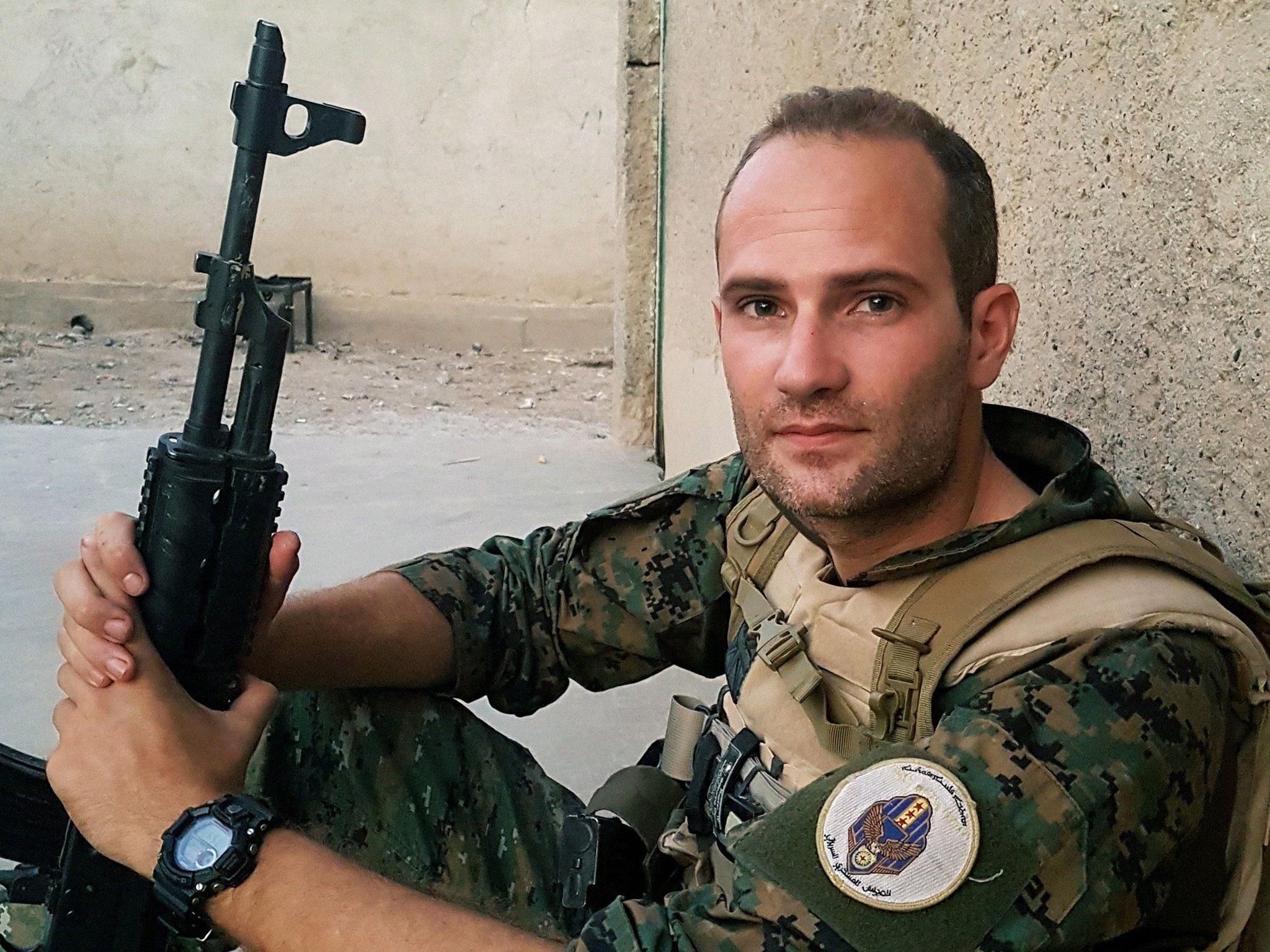
“They were vetted out very quickly,” he adds. “We are not a French Foreign Legion. You can’t put any name on the paper. We have counterintelligence requirements because Russians could be infiltrating spies.”
Nance says the arrival of that kind of volunteer slowed when Russia struck a military facility with a cruise missile near the Polish border in western Ukraine. Legion recruits were present at the time of the strike, which Ukrainian officials said killed 35 people and injured at least 130. Russia’s Defence Ministry said that its attack had killed 180 "foreign mercenaries,” without providing evidence.
“A lot of those people ran immediately,” he says. “It showed them that the war has very long arms. These cruise missiles were flying for five hours from the closest point of launch to hit your barracks.”
For every bad volunteer who was sent home, the Legion has attracted many experienced, highly trained military veterans from Nato countries and beyond — former US Navy Seals and former British special forces among them.
Their service in the Legion works differently to their time in their respective countries, however, and unlike the French Foreign Legion, where soldiers are contracted for a specific amount of time.
A non-Ukrainian who wants to join the Legion will sign a contract that commits them to fight with the army until the end of the “emergency action”, which means the end of the war. Crucially, foreigners can terminate their contract at any time, and restart it again at any time. That allows the soldiers to determine their own tours.
The legionnaires are paid a salary of around $630 (£528) a month, the same as any Ukrainian soldier, and far less than the minimum wage in their respective countries, for most. They are also part of the Ukrainian armed forces, which makes them different to mercenaries who fight for money.
“We don’t get paid any more than the average Ukrainian soldier,” says Gifford. “As far as I’m concerned, a mercenary is someone who goes abroad to get to earn money. I could earn the same amount working at Tesco as I earn here for the Ukrainian army. What is better for my long-term mental health? So no, this is volunteering.”
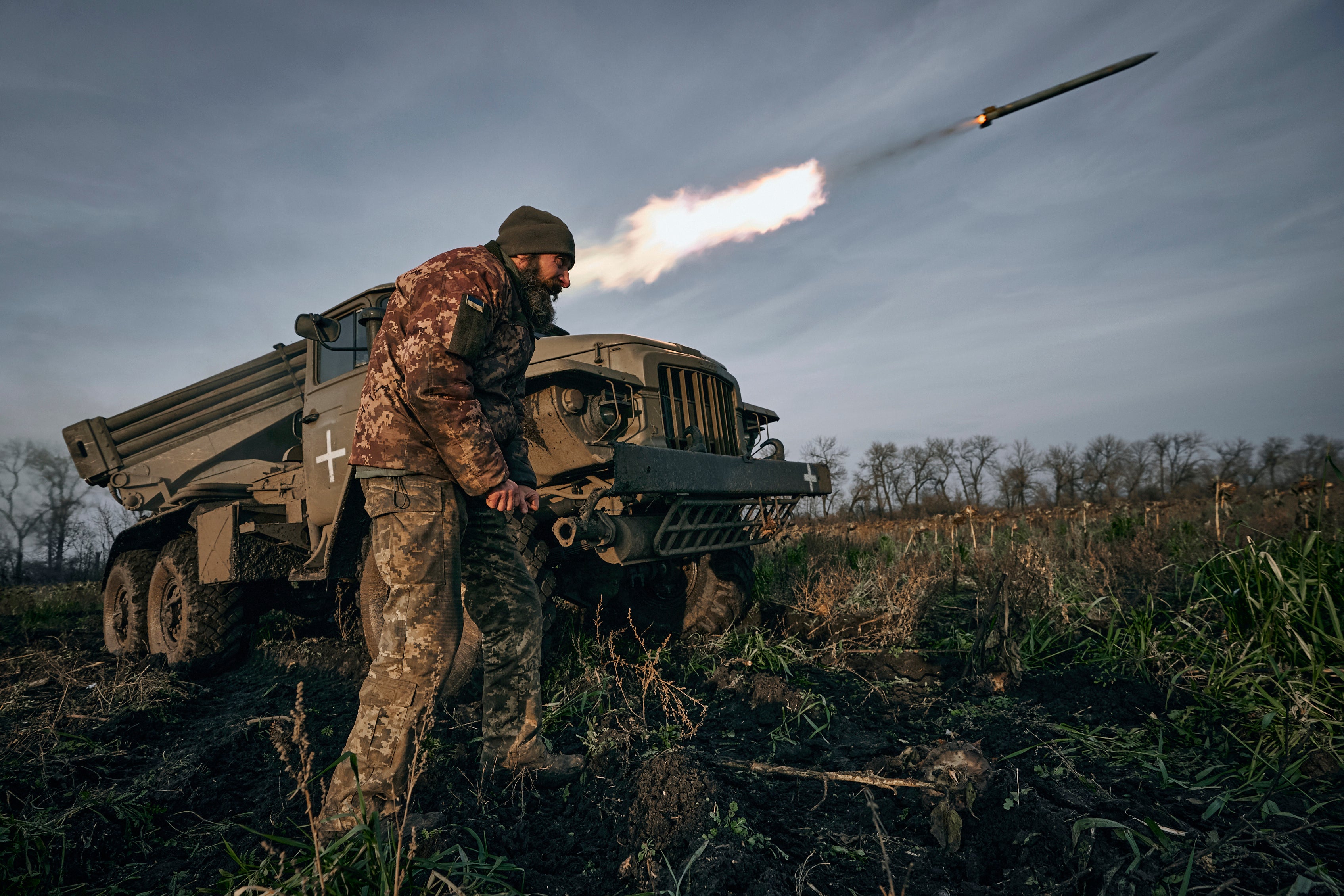
There are three battalions within the legion. The leader of each battalion is Ukrainian, as are all officers within them. Nance, who is currently out of Ukraine, fought with the 3rd Battalion, which consists of detachments of around 20 men who carry out reconnaissance missions behind enemy lines.
“We were the guys who would go out and count the number of tanks, place mines where they thought they would be safe, bring Javelin [anti-tank] teams way behind enemy lines,” Nance says.
Of the Legion’s effectiveness, he says “there’s no space for symbolism”.
“We don’t have a greater depth of experience as the Ukrainians – they have guys who have been fighting since 2014 — but what we have is a body of ‘fire discipline’ that they don’t want to train people on in the battles here,” he said.
Besides, he adds, “the Ukrainians don’t have the manpower to be holding anybody back.”
At least eight Britons have died fighting for Ukraine in the last year, and at least six Americans.
The Ukrainian Ministry of Foreign Affairs and the territorial defence force did not respond to requests for comment from The Independent about the number of casualties the Legion has suffered.
While most international volunteers join the Legion, some – like Gifford – find a place in the Ukrainian army. Gifford operates in a team of eight international fighters, with a Ukrainian commander. His team is also involved in reconnaissance missions.
“That can include utilising drones. Sometimes it also means going right up to the Russian lines and discovering exactly where the Russians are holding position. Sometimes even having to engage them to understand how many there are,” Gifford says.
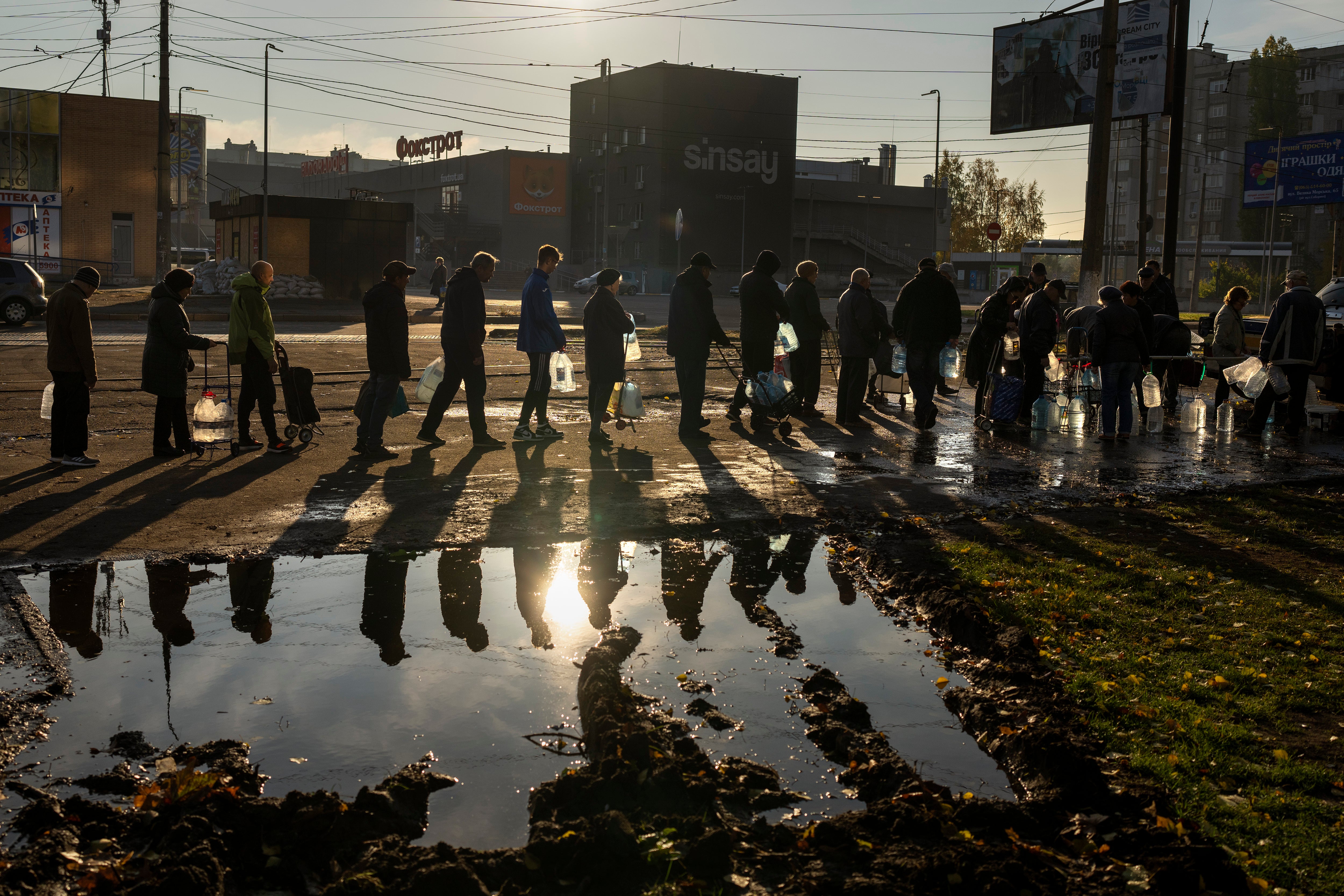
The fight is just as deadly for the international brigades as anyone else fighting in the war. In some cases, a foreign fighter can attract extra scrutiny if they are caught, as was the case for British fighters Aiden Aslin and Shaun Pinner, who were captured by Russian-backed separatists while defending the city of Mariupol.
Aslin was beaten, stabbed and forced to sing the Russian national anthem while held in detention. On 9 June last year, the two Britons and Moroccan Brahim Saaudun were sentenced to death by the separatists for "mercenary activities” — despite being members of the Ukrainian military, which should have afforded him protection from prosecution under the Geneva Conventions. The pair were released in a prisoner exchange brokered by Saudi Arabia.
The biggest issue for all soldiers in Ukraine now, foreign and local, is the relentless shelling.
“There have been moments in time where we came into quite heavy fire as the bullets sort of snapped over our heads. That’s what people expect me to talk about when I talk about this war. But this has been a war of shell fire. My scariest moments have been under shell fire,” says Gifford. “On my last mission, we were getting shelled, in a 100m area, 40 to 50 shells a day. They will rattle your brain.”
“If you are motivated by money, or just simply adventure, if you’re motivated by something that’s not rooted in a firm ideological commitment, you are a madman, because it’s horrendous. Like it’s nothing I’ve ever experienced in Syria,” he adds.
After one year of war, no one expects it to end any time soon. Nance is currently away from the fighting, back in the US, and has turned his attention to lobbying and fundraising for Ukraine.
“If I go back to the 3rd Battalion and I have to carry a sniper rifle again, then something has gone very badly wrong,” he says. “As of right now, I’m doing better assisting the Legion at the statecraft level.”
Gifford, meanwhile, is back at the front.
Neither man has regrets about joining the deadly war. Gifford sees his role as part of a long history of similar efforts.
“There’s a rich heritage of people driven by idealism to volunteer in a conflict abroad,” he says. “From the young Americans who joined the RAF to fight Nazi Germany before America officially entered the war, to everyone who went to Spain to fight against Franco’s fascists.”
“I like to believe that the volunteers going to Ukraine is a continuation of that tradition,” he adds.
Nance says he too is honouring a tradition. He references Eugene Bullard, the first Black pilot to fly in the First World War, who was forced to join the French because African Americans weren’t allowed to fly in the US airforce.
“My family has served in the armed forces right up to this last November since 1864 non-stop, and we believe that democracy is worth defending,” he says. “African Americans have joined the cause of democracy forever, even though sometimes we don’t get it all. That’s what this truly was for me. I couldn’t allow the people that were there to go through it.”

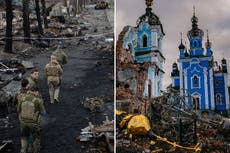




Join our commenting forum
Join thought-provoking conversations, follow other Independent readers and see their replies
Comments